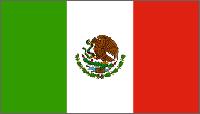XE2/WD9EWK on 14-17 February 2003

Updated 8 February 2006

Mexicali, Baja California (DM22go), at the QTH of XE2BSS
From Mexicali...
After I filed my paperwork for a new XE permit, I met Alex XE2BSS at his house
and in the afternoon I started operating on 17m SSB. My first QSO was
with Chris K5PSK at 2341 UTC on 14 February near Dallas, and then 2
other stations there before moving up to the 12-meter band. I worked
stations on 12m SSB in the USA, Japan, and one in eastern Siberia
(Russia). After that, a QSO with one station in Brazil on 10m SSB,
PY2SBY, before
trying PSK31.
On Friday night (15 February, UTC time) I had 8 QSOs on 20m PSK31 with stations in the USA, Japan, Argentina, and Russia. Not too bad, for not trying to have a large number of contacts, just casual operating.
On Saturday morning, I tried 10m PSK31, and had 4 QSOs with stations in the USA and Argentina before going back to the microphone. I worked 2 stations (in the USA and Japan) on 10m SSB, then back to 10m PSK31 where I worked stations in Argentina, Uruguay, and South Korea - and the QSOs with Uruguay and South Korea were new countries for me from Mexico! Then I moved down to 17m SSB, and worked stations across the USA and Canada, before going to 10m FM for one QSO with Rick WH6LU in Hawaii for my only 10m FM QSO on this trip.
From San Felipe...
Sunday (16 February) morning, Alex, his family, and I loaded his truck with
our radio gear and other stuff, and made the 200km/120-mile drive from Mexicali
to San Felipe on route 5. It takes about 2 hours to do this drive, with
one Mexican army checkpoint on the highway (near the junction with the
east-west branch of route 3, which crosses the Baja peninsula over to Ensenada
on the Pacific coast), and no problems during the drive. We set up at
"Ruben's Camp", a small site along the beach just north of
"downtown" San Felipe. We were able to set up two stations
here, and had AC power for Alex to run his IC-706Mk2G with a power
supply. I used gel-cell batteries for my two radios.
My first QSO was on 17m SSB at 1928 UTC with a portable station in Colorado, Mark KI0PF - who I worked in November 2002 on my drive from Las Vegas in November 2002. After that, I made 5 more QSOs on that band. I used my FT-817 for these QSOs, then switched to my HTX-10 radio for 10m SSB. I made 7 QSOs on that band, with stations in the USA, Puerto Rico, Canada, and Argentina, before switching back to the FT-817 on the 17m band. Back on 17m, I made 10 SSB QSOs with stations across the USA - some fixed stations, some portable, others QRP, with good propagation on that band. My final QSO for the day was with Steve LU4HW in Argentina, before we packed our gear for the 2-hour drive up the highway to Mexicali.
On the drive to and from San Felipe, we were able to activate the 147.120 MHz VHF repeater located north of Yuma, Arizona, from as far south as kilometer 160 on route 5 (the Mexicali-San Felipe highway), 96 miles south of Mexicali. This repeater is part of a system tying southern California with central Arizona, and also covers a large part of northern Baja California. On the Mexican side of the border, we were able to use the 147.390 MHz VHF repeater located in Caborca, Sonora - roughly 250km/150 miles east of San Felipe, across the Gulf of California! We were using the Caborca repeater from roughly kilometer 50 on route 5, 30 miles south of Mexicali, all the way to San Felipe. There was also a cross-band system located in Caborca, which we used on 438.225 MHz simplex, that we could reach on that highway from inside the moving vehicle - with a 5W handheld radio! Mexico only permits hams access to 430-440 MHz on the 70cm band, with very few possibilities for FM repeaters and simplex on that band.
I have some pictures from San Felipe:


Alex XE2BSS operating from the upstairs platform at Ruben's Camp in San Felipe
(above the XE2/WD9EWK position), with the Gulf of California in the
background

XE2/WD9EWK, later in the day, with more radios and a laptop on the table at
Ruben's Camp in San Felipe